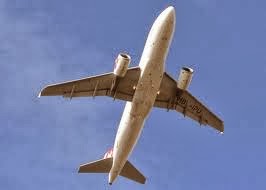Regular readers will know that I often talk about pollutants and chemicals in our environment that may adversely affect our health (from water bottles to soup cans to the soap we use, and many more). I came across some interesting articles in my reading this week that add to the literature suggesting that even noise pollution may be dangerous to our health.
In the recent edition of the British Medical Journal, there are two studies and an editorial review discussing the risk of stroke and heart disease for people who live in proximity to airports.
As Dr Fiona Godlee, editor in chief of the journal writes:
The first study compared hospital admissions and mortality rates for stroke, coronary heart disease, and cardiovascular disease from 2001-05 in 12 London boroughs and nine districts west of London. The researchers found increased risks of stroke, coronary heart disease, and cardiovascular disease for both hospital admissions and mortality, especially among the 2% of the study population exposed to the highest levels of daytime and night time aircraft noise.
In the second study, researchers at the Harvard School of Public Health and Boston University School of Public Health analysed data for over six million older American Medicare recipients (aged 65 years or more) living near 89 US airports in 2009.
The researchers found that, on average, zip codes with 10 decibel (dB) higher aircraft noise had a 3.5% higher cardiovascular hospital admission rate. The association remained after adjustment for socioeconomic status, demographic factors, air pollution, and roadway proximity.
An accompanying editorial says the results have implications for planners when extending airports in heavily populated areas or planning new airports.
As noted in the editorial by Professor Stansfeld,
These studies provide preliminary evidence that aircraft noise exposure is not just a cause of annoyance, sleep disturbance, and reduced quality of life but may also increase morbidity and mortality from cardiovascular disease. The results imply that the siting of airports and consequent exposure to aircraft noise may have direct effects on the health of the surrounding population. Planners need to take this into account when expanding airports in heavily populated areas or planning new airports.
Follow me on twitter! @drsuepedersen












